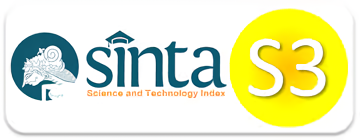Influence of Job Stress and Safety Climate on Safety Performance in Indonesia Rock Mining Company
Downloads
This study was carried out in one of Indonesia's rock mining companies. This company conducts mining operations with heavy equipment and strict safety protocols to ensure that mining is carried out safely. However, there are still a lot of accidents and complaints at this firm, and the employees are stressed out. This research aims to understand more about the safety climate and job stress and how they affect safety performance. An organization's perception of safety hazards in their workplace is known as the safety climate. Job stress is defined as a feeling of strain caused by an excessive workload and mental and emotional tension, which might impede individual performance. The quality of employee performance about safety objectives is referred to as safety performance. This study was carried out on all 85 employees of a mining company in Jambi, Indonesia, in the stone mining division. Using SPSS, this study used multiple linear regression to determine the impact of two factors on safety performance: safety climate and job stress. A simple linear regression test was used to examine the effect of safety performance on reputation and productivity. A simple linear regression test was used to investigate the impact of safety performance on reputation and productivity. A simple linear regression test was used to examine the effect of safety performance on reputation and productivity. The findings revealed that the two factors impacted safety performance if the sig value was less than 0.05 in this investigation. This study also discovered that performance level reputation and productivity.
Abad, J., Lafuente, E., & Vilajosana, J. (2013). An assessment of the OHSAS 18001 certification process: Objective drivers and consequences on safety performance and labour productivity. Safety Science, 60, 47-56.
Birch, L., Juul-Kristensen, B., Jensen, C., Finsen, L., & Christensen, H. (2000). Acute response to precision, time pressure and mental demand during simulated computer work. Scandinavian journal of work, environment & health, 299-305.
Eccles, R. G., Newquist, S. C., & Schatz, R. (2007). Reputation and its risks. Harvard Business Review, 85(2), 104.
Fatimah, F. (2007). Pengaruh tingkat pendidikan, motivasi, usia dan pengalaman kerja terhadap produktivitas kerja karyawan bagian keperawatan pada rumah sakit PKU muhammadiyah Surakarta (Doctoral dissertation, Universitas Muhammadiyah Surakarta).
Givehchi, S., Hemmativaghef, E., & Hoveidi, H. (2017). Association between safety leading indicators and safety climate levels. Journal of Safety Research, 62, 23–32. https://doi.org/https://doi.org/10.1016/j.jsr.2017.05.003
Fitri, S. R. N., & Saifullah, S. (2021). PENGARUH PERILAKU ORGANISASI TERHADAP PENINGKATAN PRODUKTIVITAS KERJA PEGAWAI DI DINAS PERPUSTAKAAN DAN KEARSIPAN KABUPATEN SIDENRENG RAPPANG. JIA: Jurnal Ilmiah Administrasi, 9(1), 49-53.
Heo, W., Cho, S. H., & Lee, P. (2020). APR Financial Stress Scale: Development and validation of a multidimensional measurement. Journal of Financial Therapy, 11(1), 2.
Johnson, B., & Christensen, L. (2010). Educational Research: Quantitative, Qualitative, and Mixed Approaches. SAGE Publications. Retrieved from https://books.google.co.id/books?id=BTMiAQAAQBAJ
Khoshakhlagh, A. H., Yazdanirad, S., Hatamnejad, Y., Khatooni, E., Kabir, S., & Tajpoor, A. (2021). The relations of job stress dimensions to safety climate and accidents occurrence among the workers. Heliyon, 7(9), e08082.
Lavoue, J., Friesen, M. C., & Burstyn, I. (2013). Workplace measurements by the US Occupational Safety and Health Administration since 1979: descriptive analysis and potential uses for exposure assessment. Annals of occupational hygiene, 57(1), 77-97.
Lazarus, R. S., & Folkman, S. (1984). Stress, appraisal, and coping. New York: Springer.
Le Blanc, P., de Jonge, J., & Schaufeli, W. B. (2000). Job stress and health. Blackwell Publishing.
Murphy, L. R. (2002). Job stress research at NIOSH: 1972–2002. In Historical and current perspectives on stress and health. Emerald Group Publishing Limited.
Neal, A., & Griffin, M. A. (2004). Safety climate and safety at work. In The psychology of workplace safety. (pp. 15–34). Washington, DC, US: American Psychological Association. https://doi.org/10.1037/10662-002
Notarius, C. I., & Levenson, R. W. (1979). Expressive tendencies and physiological response to stress. Journal of Personality and Social Psychology, 37(7), 1204
Parker, D. F., & DeCotiis, T. A. (1983). Organizational determinants of job stress. Organizational behavior and human performance, 32(2), 160-177.
Sapuan, S. M., Ilyas, R. A., & Asyraf, M. R. M. (2022). Occupational Safety and Health Administration in Composite Industry. In Safety and Health in Composite Industry (pp. 229-252). Springer, Singapore.
Sanmiquel, L., Rossell, J. M., Vintró, C., & Freijo, M. (2014). Influence of occupational safety management on the incidence rate of occupational accidents in the Spanish industrial and ornamental stone mining. Work, 49(2), 307-314.
Vischer, J. C. (2007). The effects of the physical environment on job performance: towards a theoretical model of workspace stress. Stress and health: Journal of the International Society for the Investigation of Stress, 23(3), 175-184.
Copyright (c) 2022 Muhammad Rifqi

This work is licensed under a Creative Commons Attribution-NonCommercial-ShareAlike 4.0 International License.
Copyright notice:
- Authors retain copyright and grant the journal right of first publication with the work simultaneously licensed under a Creative Commons Attribution-NonCommercial-ShareAlike 4.0 International License that allows others to share the work with an acknowledgement of the work's authorship and initial publication in this journal.
- Authors are able to enter into separate, additional contractual arrangements for the non-exclusive distribution of the journal's published version of the work with an acknowledgement of its initial publication in this journal.
- Authors are permitted and encouraged to post their work online (e.g., in institutional repositories or on their website) prior to and during the submission process, as it can lead to productive exchanges, as well as earlier and greater citation of published work (See The Effect of Open Access)
















